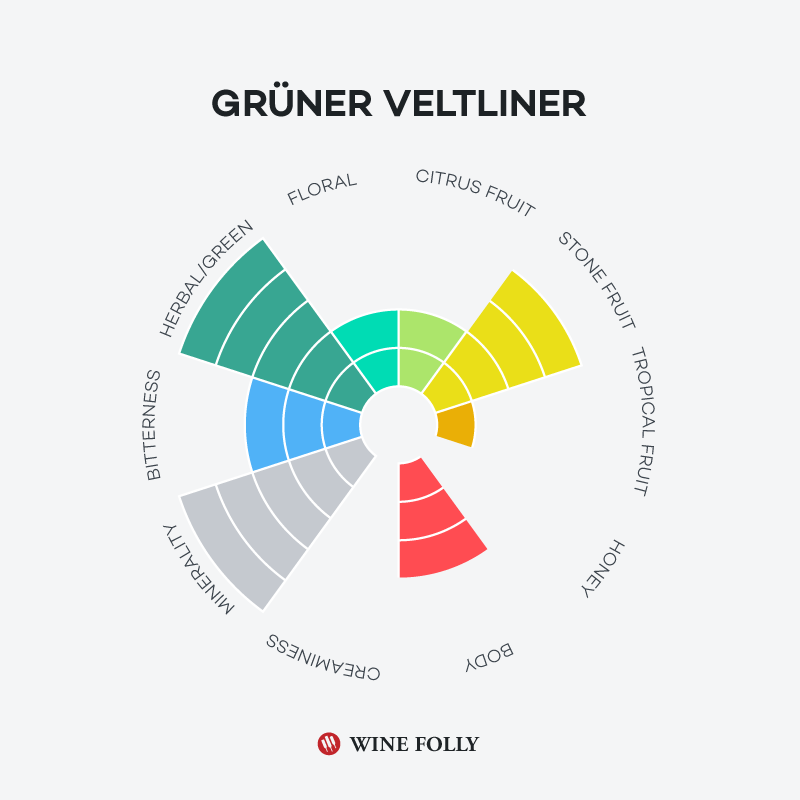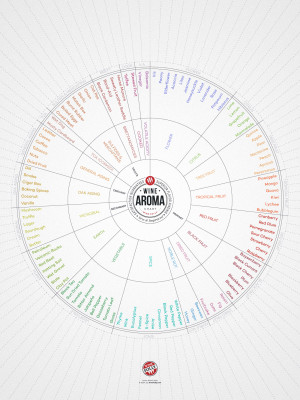A simple visualization of primary flavor components in white wines and how they are expressed in different varieties. This chart contains 16 common white wine varieties and 10 primary flavor components in varying degree.
Flavor Profiles of Different White Wines
Understanding the intricacies of different white wines starts with identifying each variety’s primary flavors. While there are some unique examples, most white wine aromas can be categorized in the following 10 groups:
- Citrus Fruit: Including aromas of lemon, lime, grapefruit, orange and citrus zest
- Stone Fruit: Including aromas of nectarine, peach, apricot, apple and pear
- Tropical Fruit: Including aromas of pineapple, mango, kiwi, leechie, passion fruit
- Honey: Sweet honeyed smells or a beeswax-like quality in the wine
- Overall Body: From light to rich
- Creaminess (or Oiliness): Sometimes a creamy aroma and often a texture of oiliness on the palate
- Minerality (or Astringency): A textural quality of slight grittiness or an aromatic quality that smells like freshly wetted asphalt on a summer day (aka petichor)
- Bitterness: A distinct bitter, quinine-like taste
- Herbaceous Aromas: Grassy, herbal or other “green” aromas in the wine
- Floral Aromas: Flower smells from light white flowers to intense rose
Where do these aromas come from?

The dominant flavors in different wines arise from varying levels of aroma compounds. The aroma compounds in wine are called “stereoisomers” that chemically mirror real fruit smells. So, if you can smell nectarine in a wine, you are smelling a combination of aroma compounds that our nose identifies as the same thing.
Some of the flavor profiles, such as “creaminess”, are not from the grape but from the winemaking method. Also, an individual wine’s taste profile is influenced by the region where the grapes grow. This is why Sauvignon Blanc from Napa tastes different than Sauvignon Blanc from the Loire Valley.
What’s next
This chart is designed to help identify the major taste profiles in common white wine varieties to compare them to one another. This is meant to be a general overview, the true test will be tasting each variety to develop your own mental wine flavor repertoire. If you’d like more detail, feel free to check out the updated wine aroma chart for more flavors.
See the wine aroma chart


